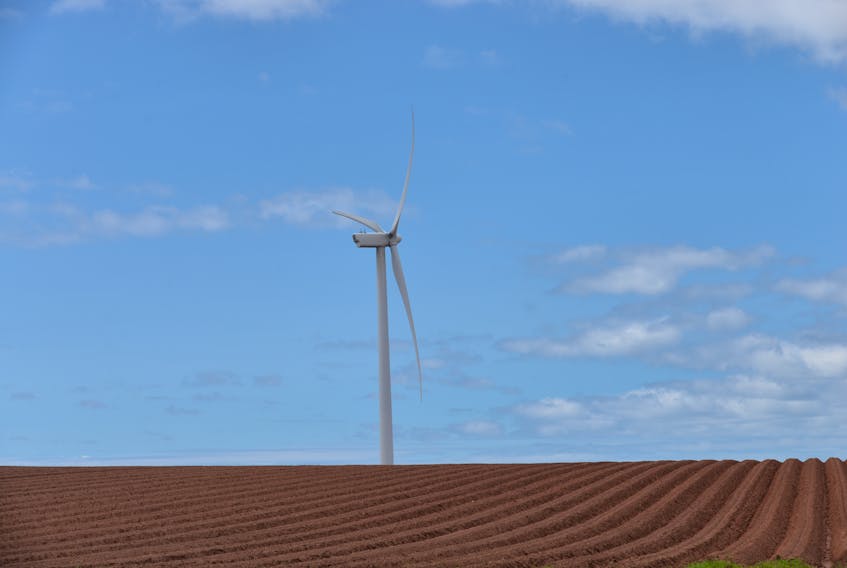Matt Hall
Guest Opinion
When it comes to energy and emissions on P.E.I., some important factors often seem to go overlooked. Thanks to improving technology, switching to clean energy sources is feasible and, frankly, inevitable. But how quickly that happens has major implications both for the climate and for economic competitiveness. Though P.E.I. has a valuable head start with its wind power, it will take smart and decisive energy policies to keep that lead, starting with a strong emissions reduction target.
There’s little question that a widespread transition to clean energy is a matter of when, not if. Concern about climate change is playing a steadily expanding role in everything from investment decisions to infrastructure planning to insurance calculations. Meanwhile, renewable energy technology has improved to the point that renewables are now the cheapest energy source available, making up the majority of new electrical generation installed globally for four years running.
On the consumption end, efficient heat pumps are steadily replacing oil furnaces, while electric cars and busses are entering the mainstream and already displacing fossil-fuel vehicle sales in some countries. In addition to lower operating costs, electric solutions are often cleaner and more convenient. The combination of climate concern and technology advancement has set an irreversible clean-energy transition into motion.
Although the transition is inevitable, its speed is uncertain and tremendously consequential. Essentially, we are in two races. The first is a collective race against climate change. How quickly we, as a planet, reach sustainable emissions levels will determine whether global warming is held to 1.5 C or goes beyond 2 C. The latest IPCC (Intergovernmental Panel on Climate Change) report details severe consequences that reside in that half-degree of difference.
The second race is between competing economies. In a carbon-priced world, being ahead of the decarbonization curve positions a local economy for comparatively lower energy costs. It also protects the competitiveness of export industries. As major global economies adopt carbon pricing, it’s likely they will implement emissionsbased tariffs to keep a level playing field in international trade. These so-called “carbon tariffs” would be applied to the emissions associated with imports coming from jurisdiction that lack equivalent carbon pricing, putting economies that are slow to decarbonize at a distinct trade disadvantage.
Fortunately, P.E.I. is perfectly positioned to be a low-carbon economy leader. The Island has a world-leading wind power resource, and Islanders appreciate the value of renewable energy for both sustainability and selfsufficiency. However, mixed political signals around carbon pricing, non-“smart” utility investments, and head-scratching about whether P.E.I. should try to achieve its fair share of emissions reductions have left the Island spinning its wheels while other jurisdictions are moving quickly. A growing list of cities and regions, including Vancouver and California, have set 100 per cent clean energy goals, far exceeding the emissions targets being debated in P.E.I.
P.E.I. should adopt clear and ambitious emissions reduction targets so that the Island can get down to the important work of decarbonizing its emissions-intensive sectors. High home heating emissions can be reduced through expanded energy efficiency programs and updated building regulations. Transportation emissions can be reduced through more serious investment in public transit, active transportation, and electric vehicle infrastructure. Carbon pricing can incentivize innovation toward additional solutions across the economy.
Lastly, because electrification is key to most emission reductions, it’s essential that the electricity supply be clean and affordable. That means installing more on-Island renewable energy capacity and using smart-grid technology to reduce reliance on imports from New Brunswick. Solar power and energy storage can help smooth out wind power variations, and Maritime Electric could follow Summerside’s example of using smart meters and demand response to increase renewable energy utilization while saving money.
P.E.I. has the resources to excel in a clean-energy transition, including forward-thinking programs at UPEI and Holland College, a broad array of cleantech companies and innovators, empowered Provincial energy entities, and strong connections between government, research institutions, industry, and communities. But it starts with provincial leadership: strong emissions reduction targets and strategic policies that guide progress toward a cleanenergy future.
Taking a proactive approach will help position P.E.I. as a climate leader with a global reputation for clean-energy innovation, exportable cleantech products and services, and a competitive economy in a carbon-priced world.
Matt Hall is an assistant professor (on leave) in the Faculty of Sustainable Design Engineering at UPEI.









